New England Digital Fibre artist Wen Redmond is on a mission to take the fear out of working with digital technology in fibre art. And her new book, Digital Fiber Art: Combine Photos and Fabric – Create Your Own Mixed-Media Masterpiece, is her latest tool in that effort.
Printing on fabric with a home printer is not new in and of itself. Fabric and craft stores have a variety of products artists can use. But those who have used such products know their limitations.
Armed with her love of photography, Wen has spent 20-plus years exploring how to merge digital processes, fabric painting, photography, mixed media and surface design. Now she wants other textile artists to know they can do it too…and still use their home printer!
Wen has been published widely in books and magazines, featured on Quilting Arts Television, and has two DVD workshops with Interweave Publishing. Her work has also been included in many juried exhibits and collections, including Marvin Fletcher’s Quilt National collection.
We had the good fortune of having Wen not only share her story of discovery, but she also provides readers with an inside look at her signature Digital Fiber Art techniques. We promise you’ll be both surprised and inspired.
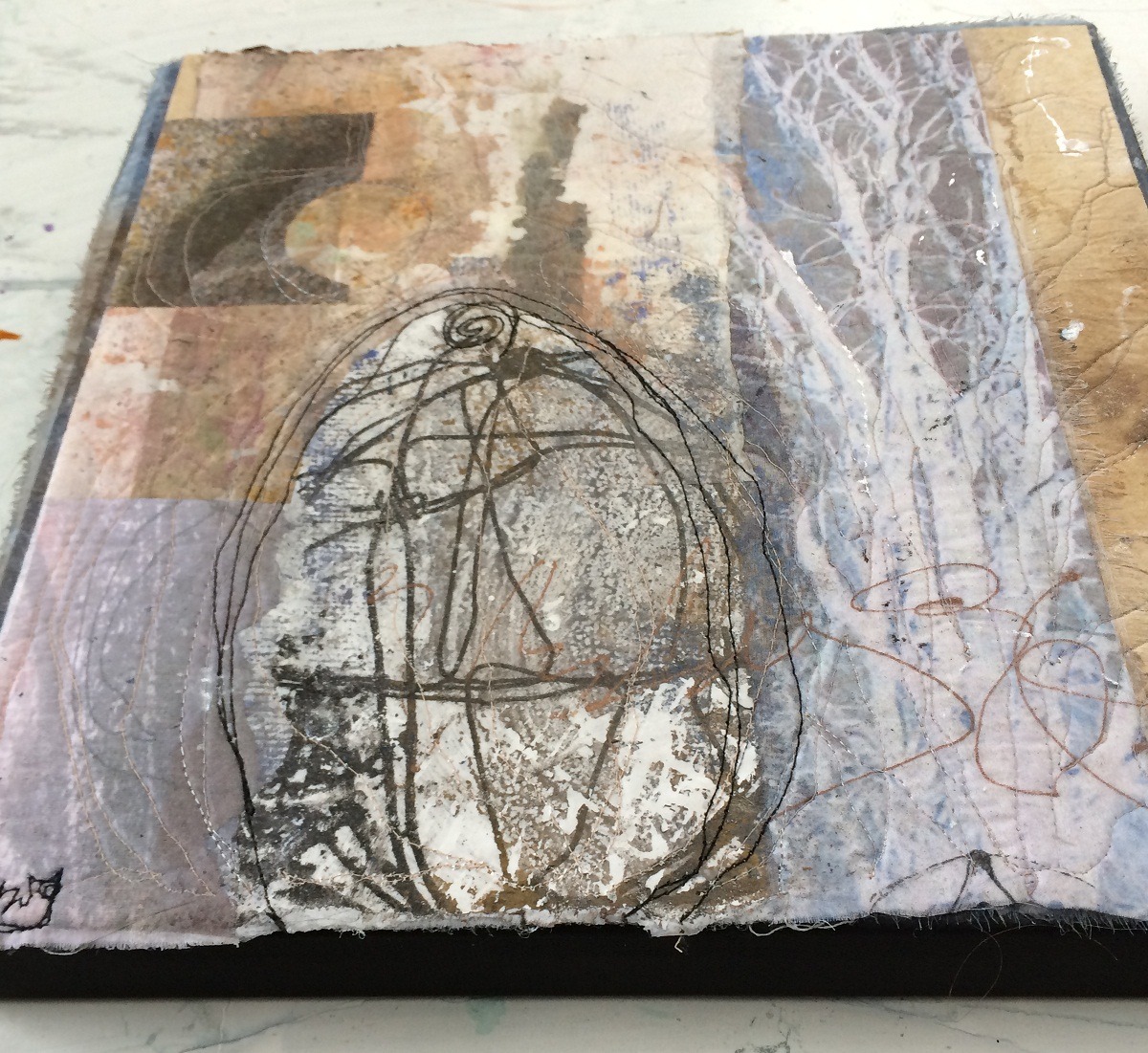
Holding a dialogue with one’s art
TextileArtist.org: What initially attracted you to textiles as a medium? How was your imagination captured?
Wen Redmond: I’ve always liked fiber, texture and how light reflects off surfaces. But I don’t know when exactly that awareness took place.
I chose felt for a high school art project. I liked the way it felt, the colors. I also made clothes for myself, and before that, for my dolls. I just was attracted to fiber, quilts and weaving.
For a time, I thought I’d become a fashion designer. And later I went into Home Economics in college. But in my first teaching job, we made soft sculptures…not aprons!
Working with fabric, color and texture has always been a source of jubilation for me. I allow the materials I work with or create to focus me intuitively. Sometimes I start with a plan, a drawing or photograph. But every piece has an expression of its own.
I like to try new ways of presenting or working with an interesting new medium. I act as the facilitator. I create, and then the piece responds. We have a dialogue until the piece is finished.
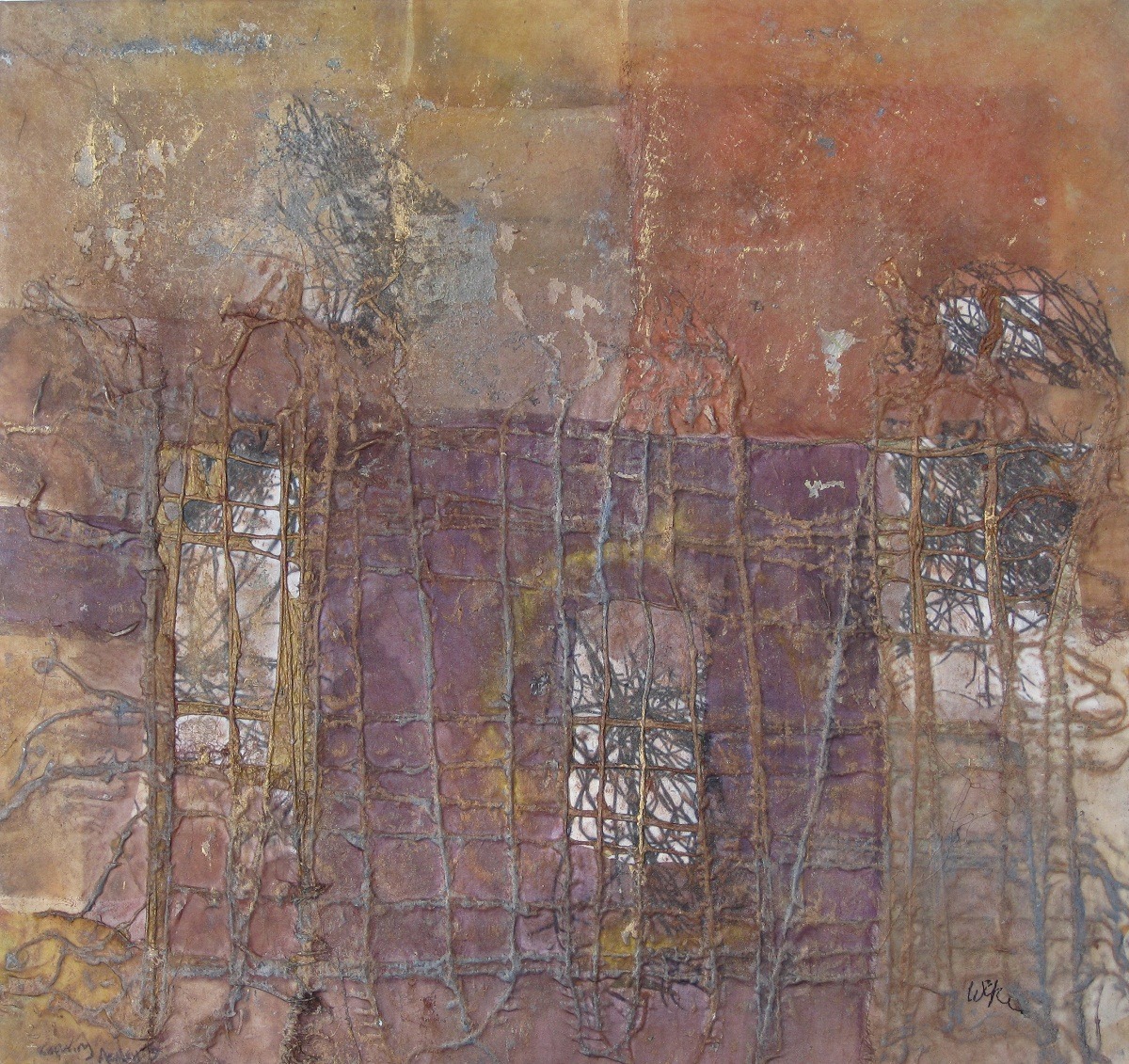
What or who were your early influences and how has your life/upbringing influenced your work?
My list is long, as I’ve been fascinated by a variety of art and artists, especially modern art and expressionism. I’m also inspired by the hundreds of nameless women who made art with fabric over the centuries.
To name a few, I love and am inspired by the collage works of Joan Schultz and Fran Skies. I also enjoy the texture of works by Dorothy Caldwell, Sue Hammond West and Jill Kerttula. Anselm Kiefer’s grubby approach is fascinating, as are the painterly works of Deidra Adams. Takahiko Hayashi and Cas Holmes are among many incredible mixed media artists I admire. And favourite photographers include the Starn twins and Michael James.
I’ve had the honour to learn from some of the country’s most innovative fiber artists. And I continue to explore my chosen medium of fiber to stretch its possibilities as an art medium.
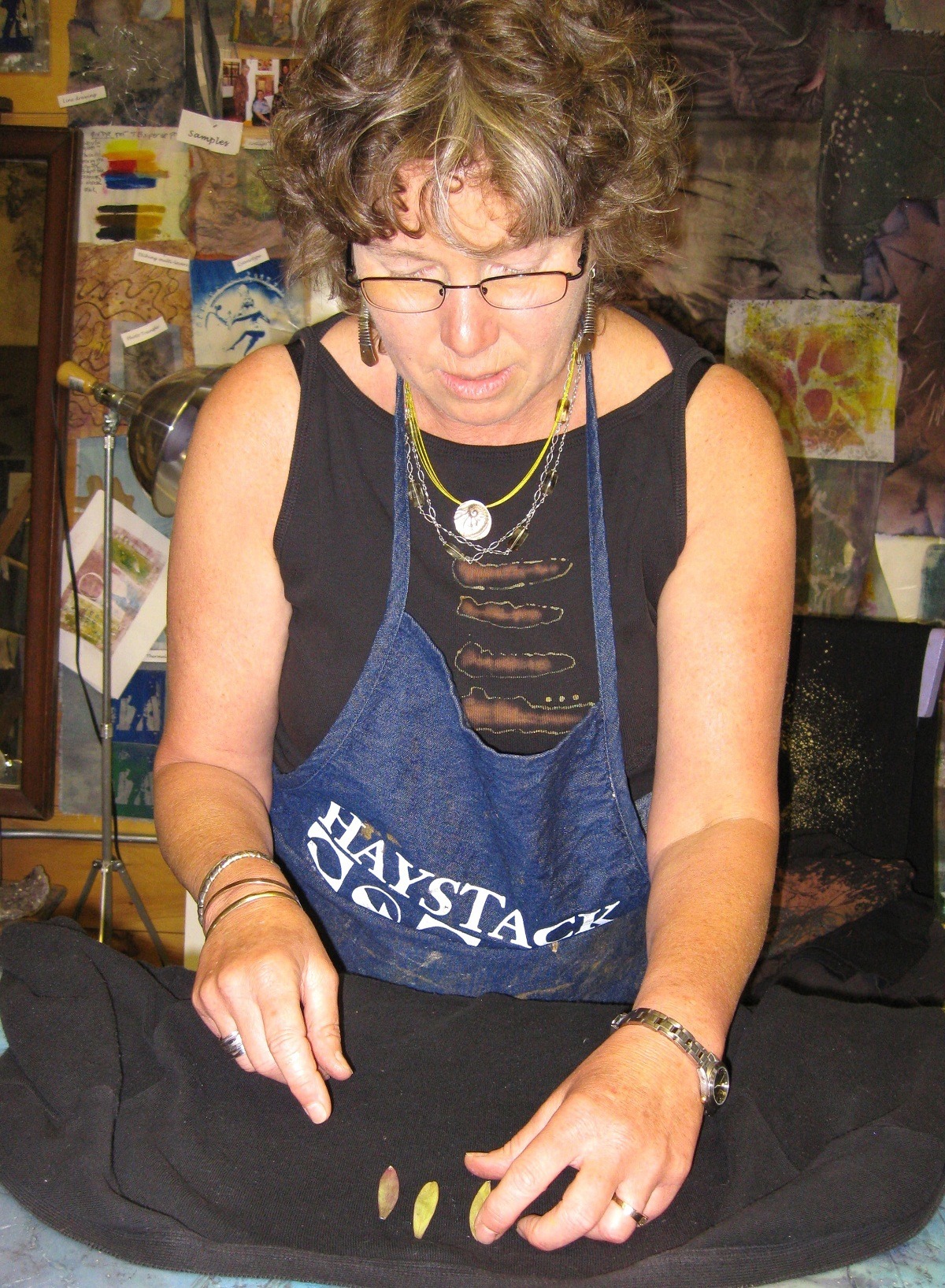
What was your route to becoming an artist?
I have always been interested in photography. The more one does it, the more one develops an eye and a deep sensitivity to one’s surroundings.
One of the first quilts in which I included photography was called ‘Peaceful Dreams’ (1987). It featured a photo of my three small children sleeping under a miniature pinwheel quilt that was positioned on a flower that grew like ‘Jack’s Beanstalk’ soaring from the earth.
The photo was a Xerox transfer that was thick and difficult to applique. And while I liked the end result, it was a real challenge to create.
So when computers and cameras started being able to talk to each other, my creative work exploded! I was able to experiment printing on fiber, and this led to a unique personal artistic expression. I now merge digital processes, fabric painting, photography, collage, media mix and surface design.
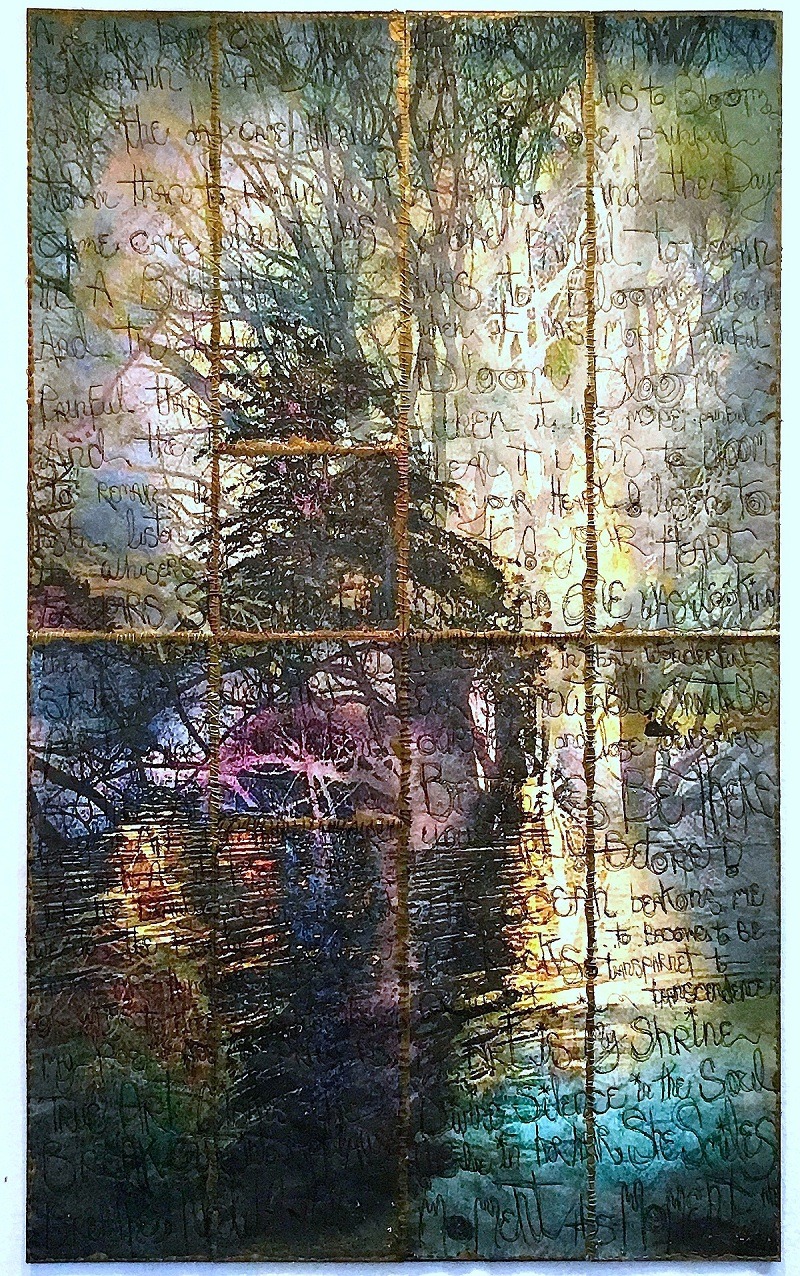
Digital technology can be a wonderful creative partner
Tell us about your process from conception to creation
‘Digital Fiber’ is a phrase I coined to describe the intensely creative possibilities of printing photographs directly on fiber using an inkjet printer. The sewn photographs can be presented in so many ways as described in my new book, Wen Redmond’s Digital Fiber Art .
I wrote that book because I wanted to share what I’ve discovered in merging the fiber art world with the digital world. My techniques involve so much more than just simply printing on fabric. Instead, they collectively inform a mixed-media process for presenting images on fabric like never before thanks to digital tools that have emerged over the last 20 years.
My ‘Continuing the Conversation’ piece is a good example of the creative possibilities within Digital Fiber Art.
I started by sifting through several photos I had taken before. It’s always easy to choose images when inspiration strikes.
I then uploaded the chosen photos onto my computer and used a sneaky layering technique that integrated my selected photos with other photos I had taken of my painted fabrics and collage processes. I then used the computer to resize and segment the final layered image for printing to create a larger piece (it measures 30” x 50”).
Before printing, I prepped the substrate fabric (medium to heavy interfacing) by spreading a thin layer of moulding paste to create a painterly texture on the fabric. Once dry, I covered the moulding paste with a product called inkAid which is a digital ground that enables printing from an inkjet printer onto fabric.
Once the fabric sections were printed and dried, I quilted them. I purposely use sewing lines as a design element. Each section was then edge stitched, sealed with paint and tied together with pearl cotton. Finally, the entire piece was protected with a thin layer of varnish.
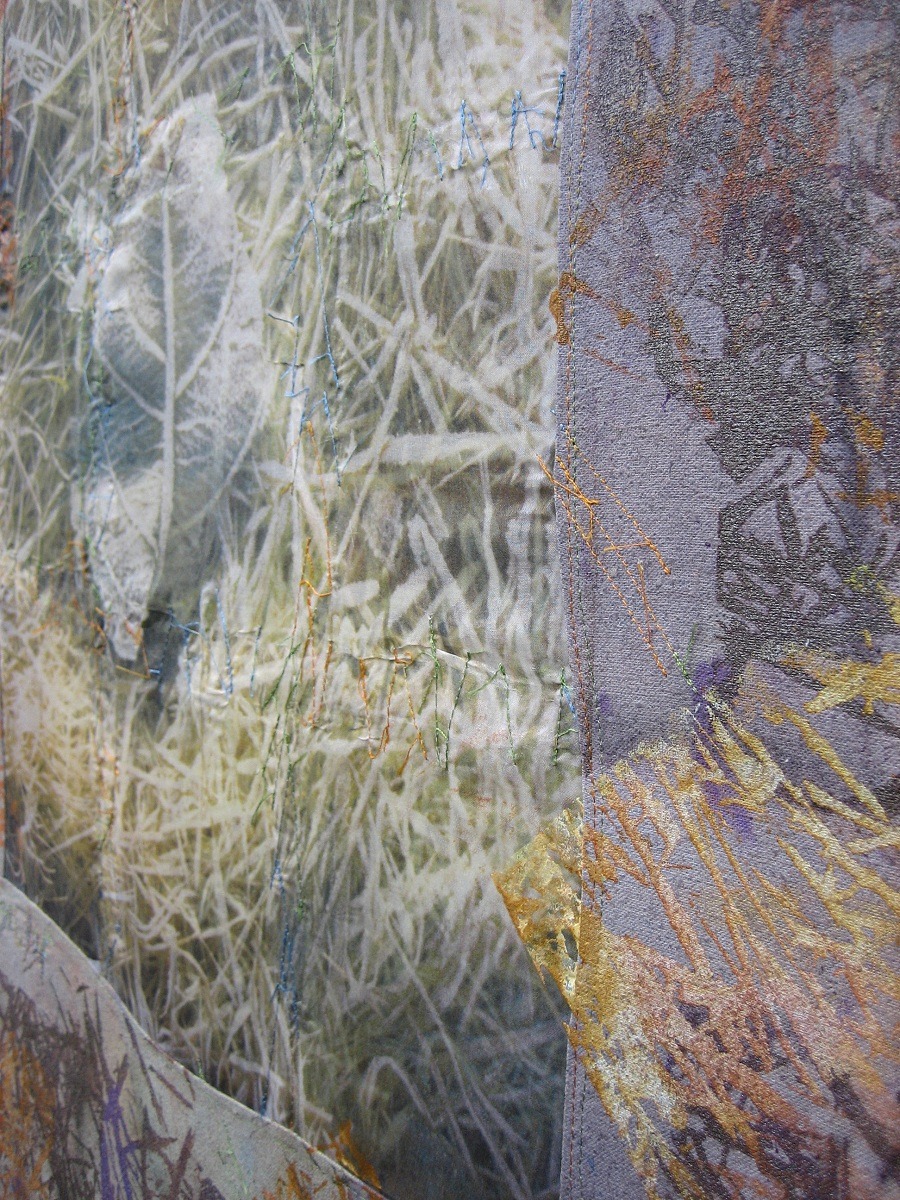
Tell us a bit about your chosen techniques and how you use them
Continuous exploration has led to creation of several of my signature Digital Fiber techniques. These include a 3-D effect with holographic images, using molding paste to create mixed media textured photographs, and a Serendipity Collage technique. I’ve also mastered how to segment quilts.
I feel like a pioneer of sorts through my exploration of media. And as I create, my pieces respond. Each work becomes an obsession. Time is condensed and almost irrelevant. I don’t keep hours. I ‘work’ all the time.
The simple mechanics of a piece can take several months. But the initial idea can be very hard to capture. It is the germ, the heart of the process. And it’s why I do what I do.
When I first started printing images, I was creating dyed transparent silk collages. I first used commercially-prepared inkjet silk organza on which to print my images. And shortly after I started using the product, I noticed after peeling the transparent silk off the carrier sheet, a shadow print remained on the sheet.
And then I noticed as I pulled the fabric and carrier pieces apart and there was just the right distance between the two, an almost 3-D illusion appeared. That was the discovery that brought my ‘holographic’ works to life.
I published that technique in Quilting Arts Magazine in 2007, and that was followed by an appearance on Quilting Arts TV and production of a DVD!
Another technique I developed was using moulding paste as the printing surface. Photographs printed on the paste are thin enough to be sewn or collaged into small compositions. And the ways the paste textures influence final images is magical.
So in 2012, I submitted that technique to Quilting Arts Magazine, which led to yet another DVD called Textured Fiber Photographs.
Other techniques I’m known for are segmenting fiber artwork into sectional or modular presentations and using inkAid digital grounds in the printing process.
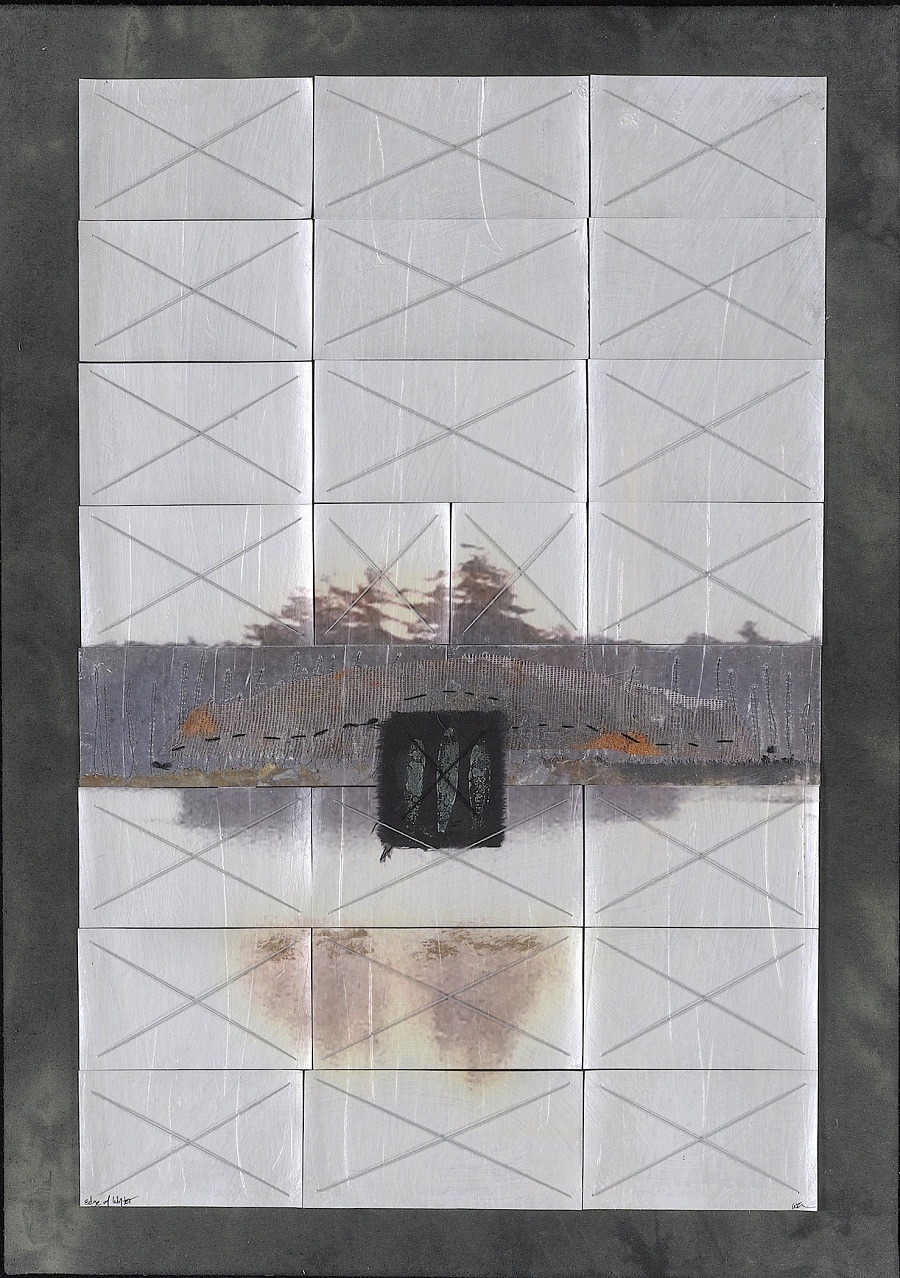
What currently inspires you?
Experimenting is key to my work. I get bored reproducing work in the same presentation style.
I also find nature inspires me to bring the outside ‘in.’ My walks generally help me clear my mind, work on artistic solutions or just let go enough to allow space for ideas to occur.
My work tends to be biographical. I work out inspirations, insights, feelings and reactions to the outer world. And when I work, I allow and encourage a collaborative process with spirit, my higher self, and that mind-boggling principle of the universe.
When artists are in this state of mind, the intuitive is tapped and the work can become more than the sum of its parts.
Making art always puts me into a certain space, like meditating. I call this ‘being in the flow,’ and I put that energy into my art. Making my art makes me tap into levels of myself that help me become more aware, more conscious and more grateful.
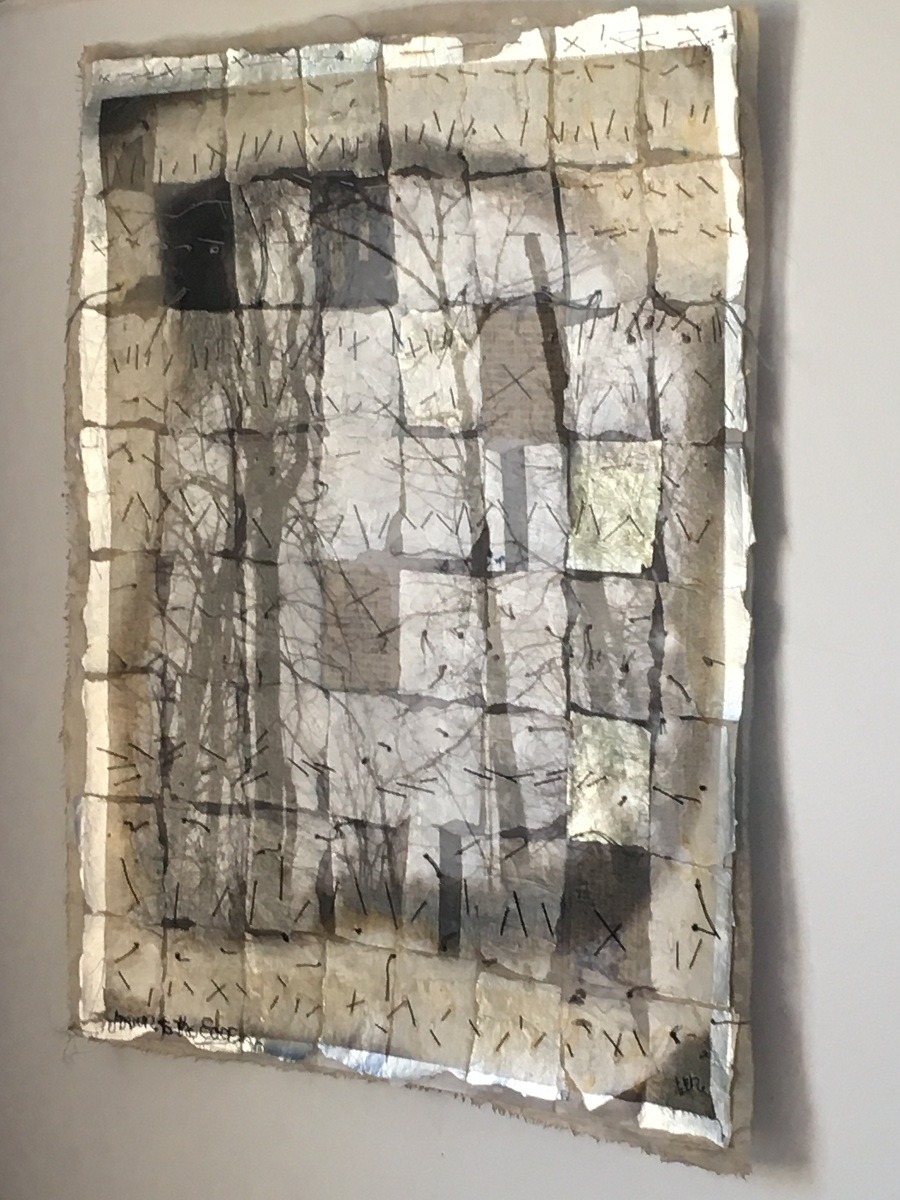
Listen for your muse
Tell us about a piece of your work that holds particularly fond memories and why?
It’s usually the piece on which I’m working at the moment! But I have to say ‘Drawn to the Edge’ was one of those ‘aha’ moments. I drink a lot of tea, and one day, while tearing open the packet, I saw this lovely matte silver lining (no pun intended!) I thought ‘I could print on this!’ Now everything becomes suspect for printing!
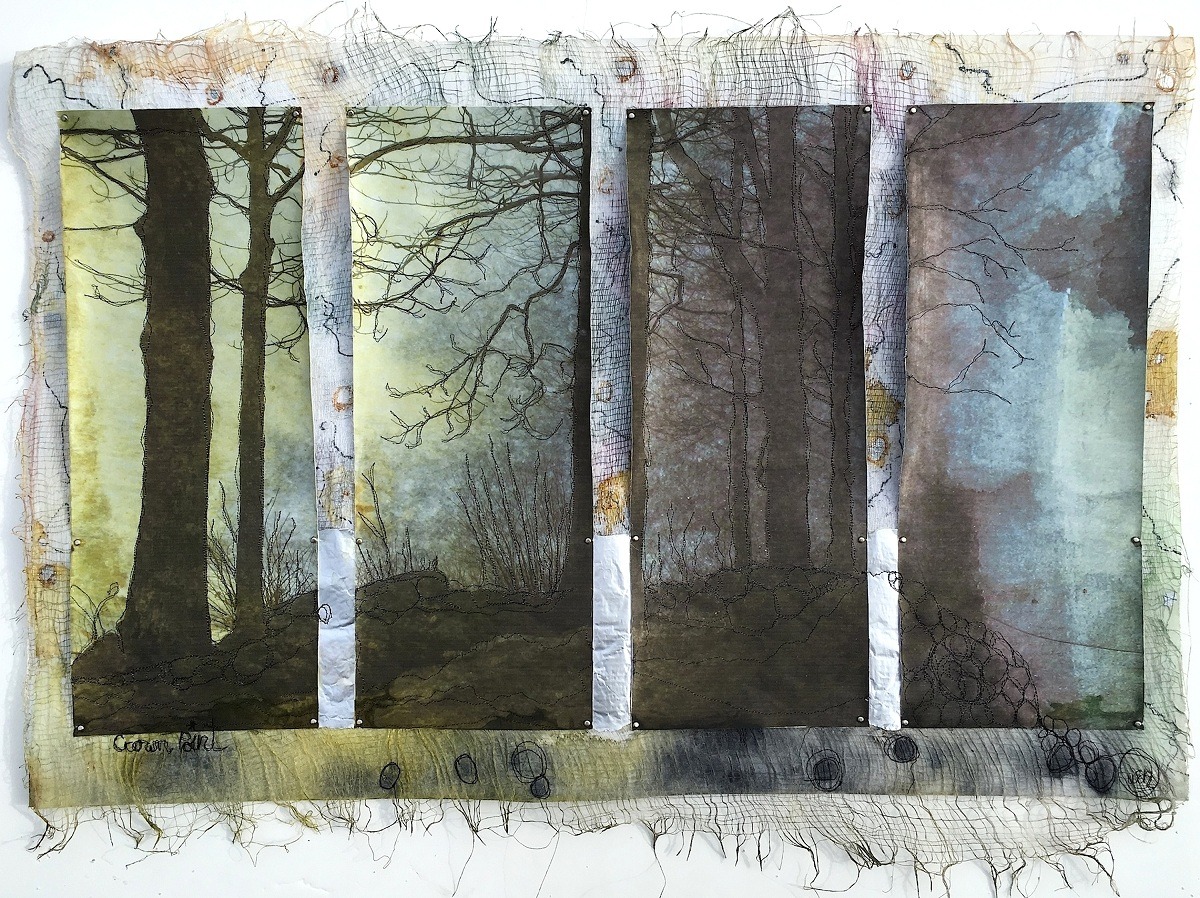
How has your work developed since you began and how do you see it evolving in the future?
My work has evolved over time. Starting in the 70’s, I did whatever I wanted to sew fabrics together and quilted with felt ‘batting.’ I then moved to New Hampshire and ‘learned’ I was doing it all wrong.
So I moved on to making folk quilts and used old wool blankets for batting. Then curved piecing caught my attention for a time, and I did a wearable art series with hand-dyed wool for local galleries.
For a short while, I also played with 3-D collage, which was basically applique without turning under and sewing directly onto the base, wrinkles and all! I stopped because ‘no one was doing it.’ Yet now it seems to be in vogue.
I then did a series of dyed transparent silk organza, which as noted earlier, led to my holographic work.
So you see, all of these and other experiences inform and build upon each other. Roads merge and evolution results.
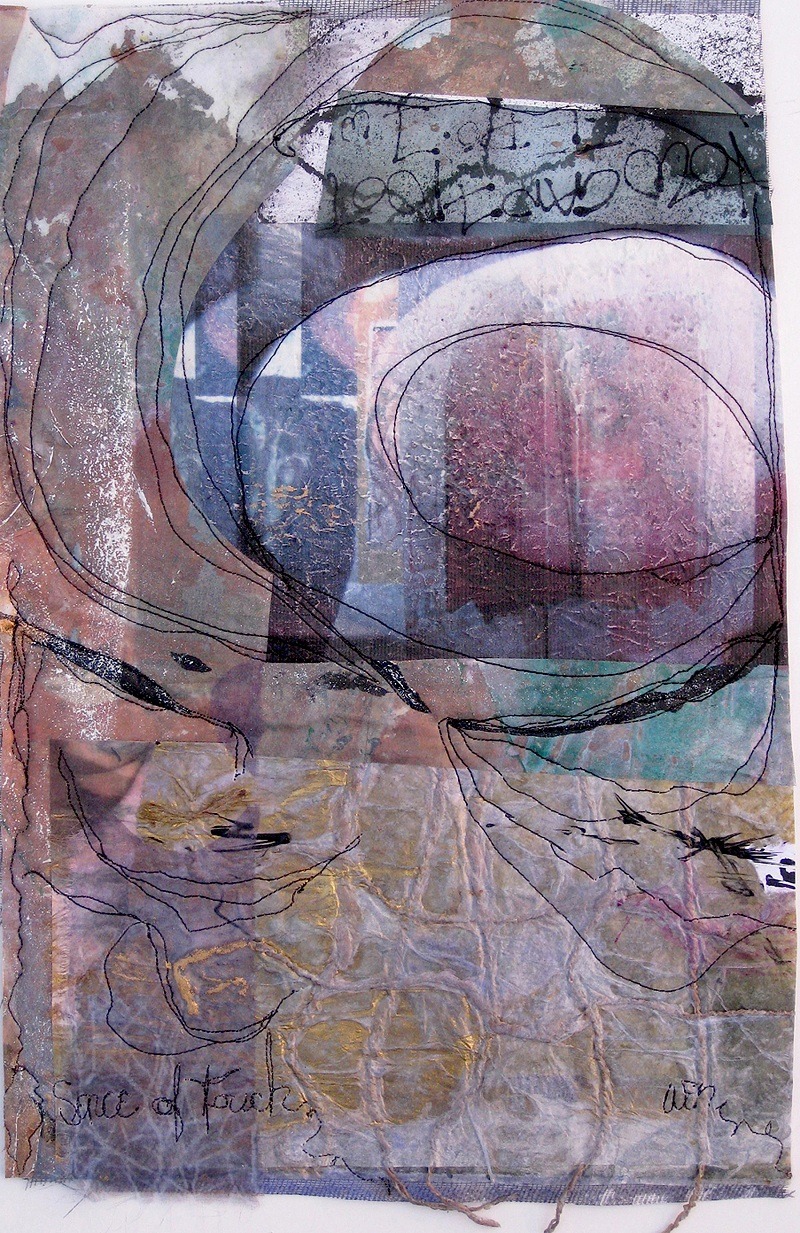
What advice would you give to an aspiring textile artist?
Listen for your muse. She may be quiet at first, but keep listening, even if it’s just a whisper.
Don’t worry what ‘others’ are doing.
Take workshops with those you admire. Then make the technique your own. And take workshops outside your medium. It enlivens your art and exposes you to different ways of thinking about mediums. Everything builds on each other.
Mistakes are opportunities. Sometimes those mistakes are actually the universe encouraging you to try something else.
Go to your studio and make something.
For more information visit www.wenredmond.com
How have you incorporated photos into your own textile art? What has worked? What has been a challenge? Let us know below
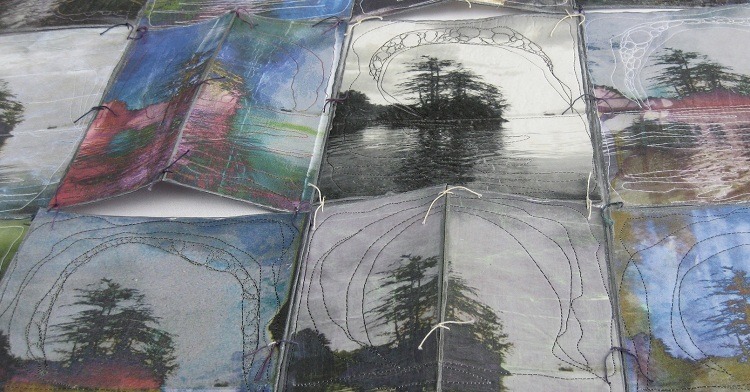

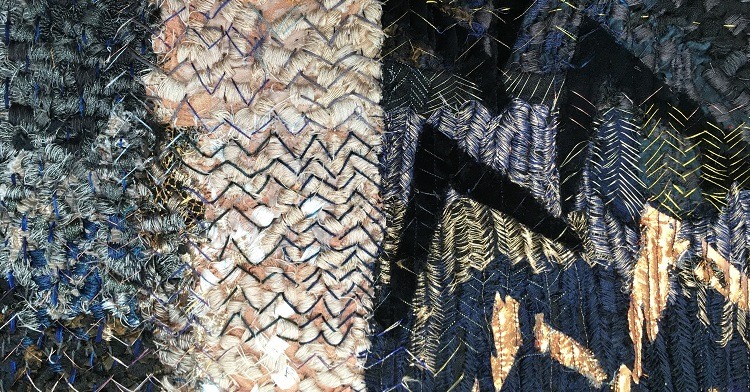
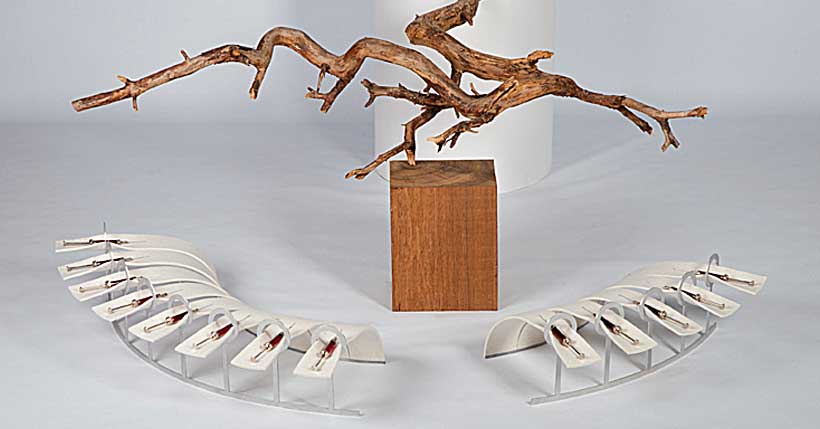
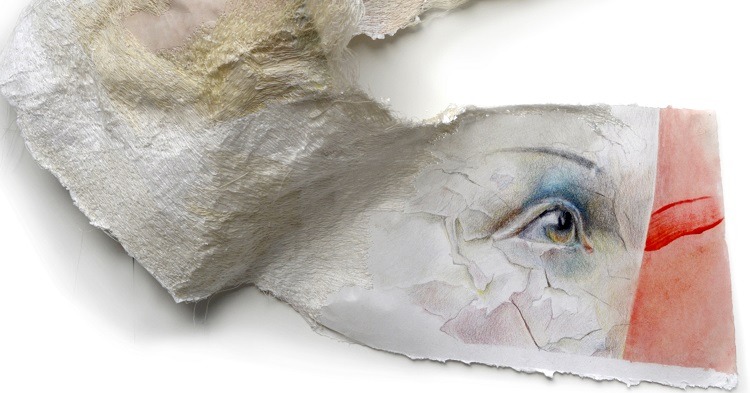
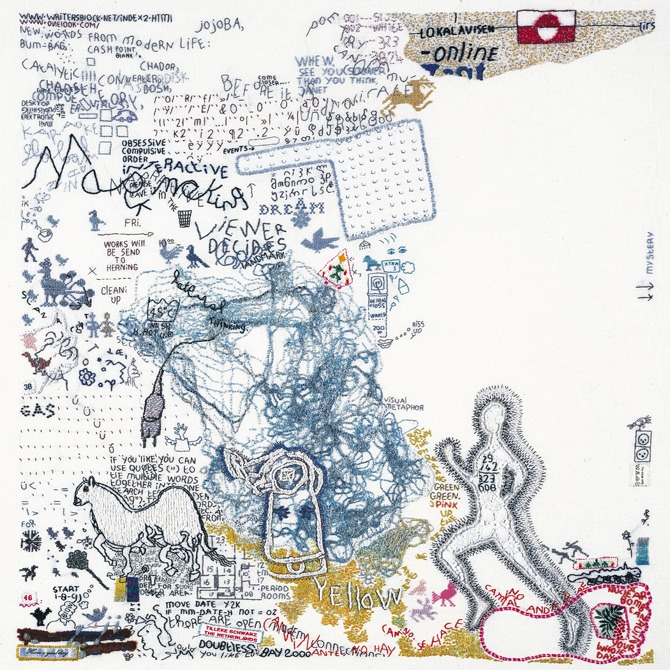
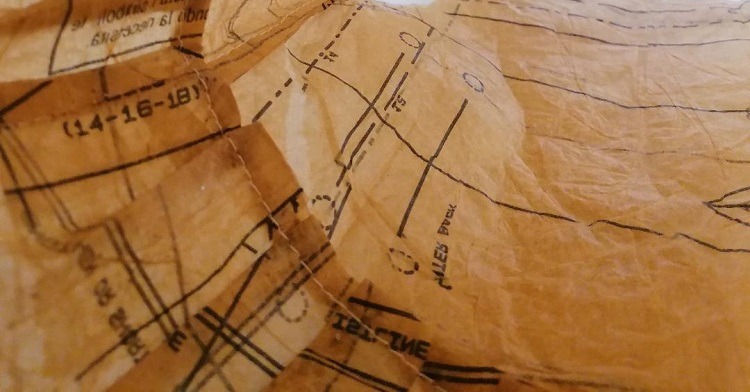
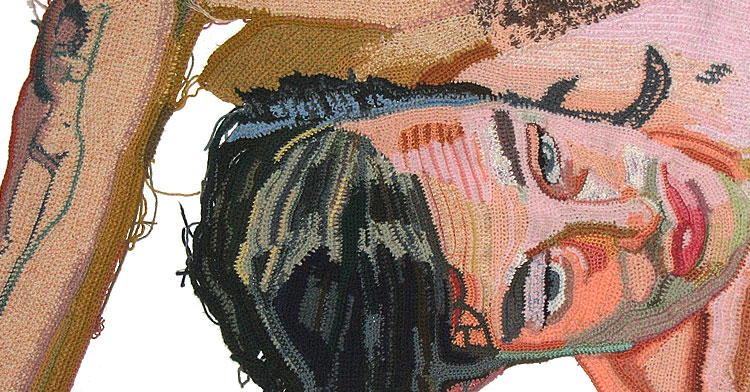
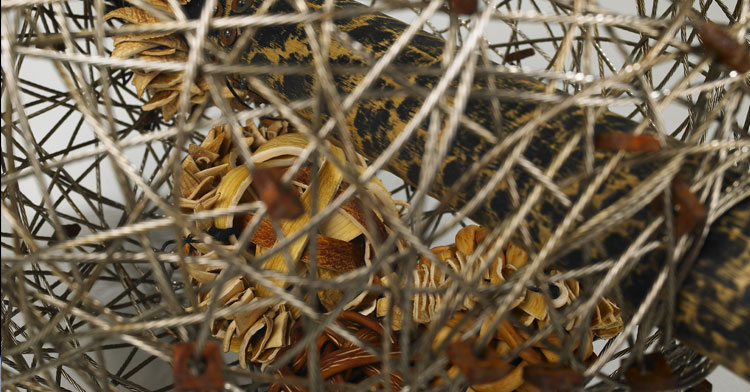
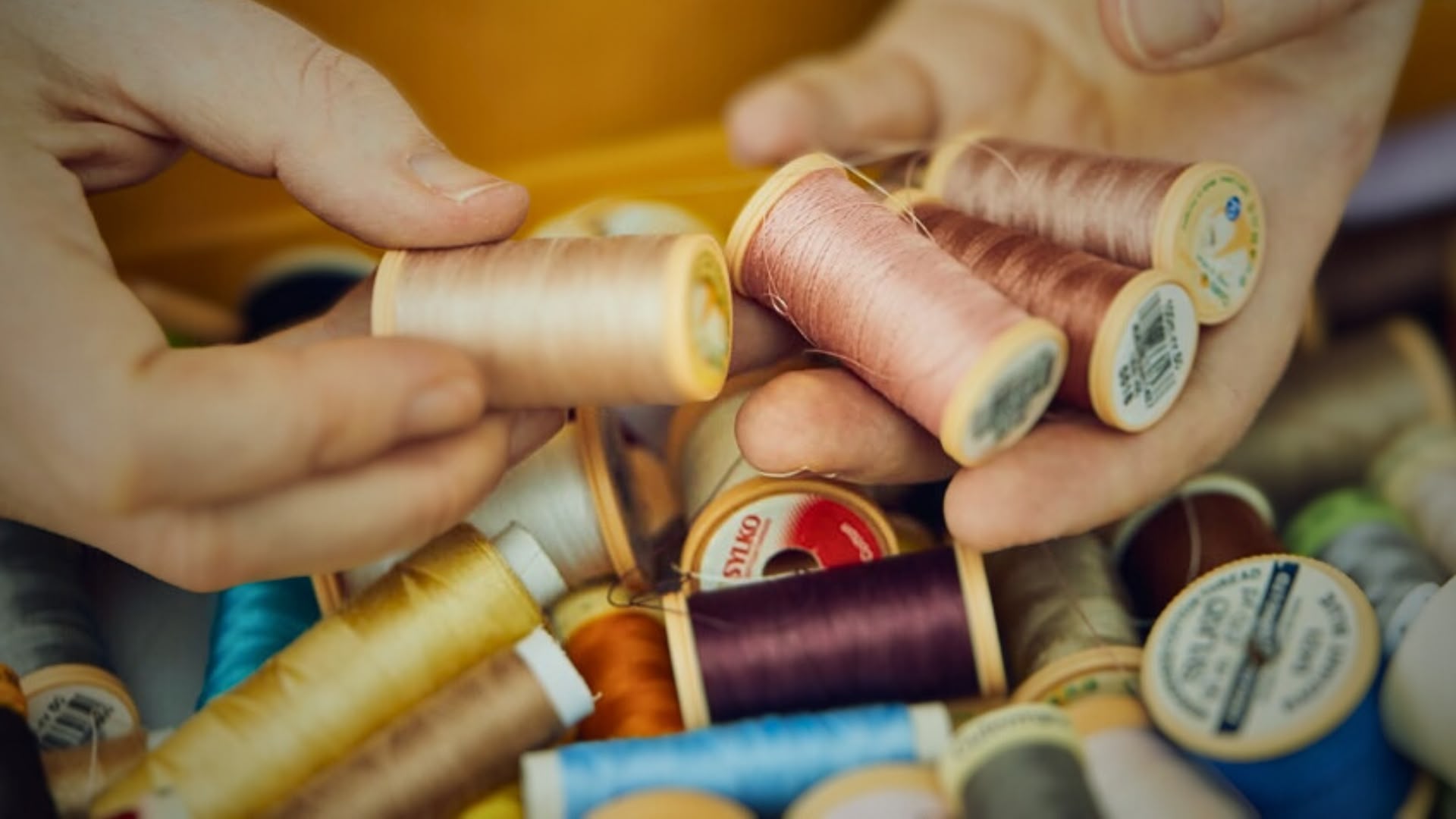
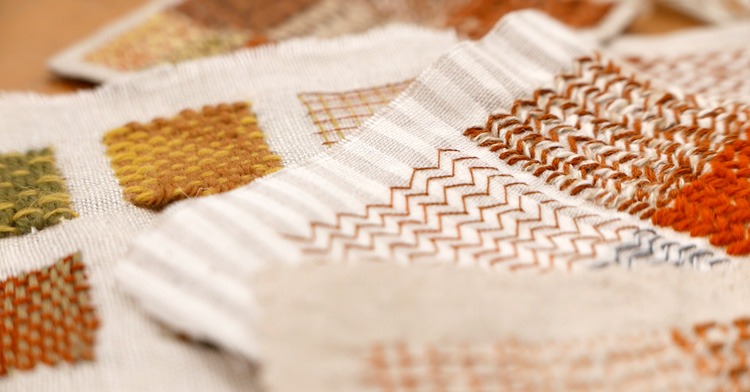
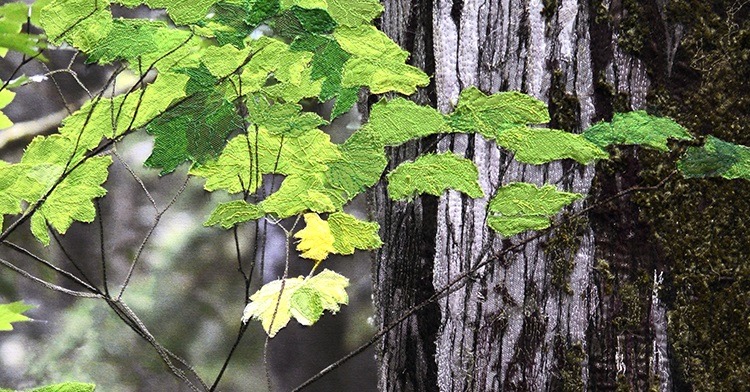
6 comments
Wen Redmond
I just use a simple printer. You can use any printer that prints on paper to print on inkjet prepared fabric. I have an Epson all in one 410. Models of course come and go so this isn’t the latest model anymore. However if you were out want the best quality, get a photo printer. I have an old Epson 2400 and a new Epson 3880. These are photo quality printers meaning you get more ink dots to the inch or whatever. From there, you can adjust settings. For most of my work, I just use the simple paper setting that is a default setting in your printer. However some printers offer other settings such as mat or in enhanced mat. Another tweak that you can do, is increase saturation, contrast and or other things you might try with your photograph. The point is experimentation. I always make a 4 x 6 sample 1st to see what the colors will print out as. I don’t forget all of this is in my book digital fiber!
Julie-Anne Rogers
Hi everyone,
Wen uses Epson printers with their UltraChrome or Durabrite ink
MK
What is the BEST printer for printing on textiles.
Something under 6K would be great !
Brigid Manning-Hamilton
I’m curious about what printer(s) Redmond uses. That’s always been the biggest issue for me. And of course it’s always annoying when a manufacturer no longer supports the product.
Wen Redmond
Thank you so much for publishing my art. I love what I do and I love to share!
Helen Lloyd Blundell
It’s always a joy to see you appear in my in-box and today you went that tiny bit further. Wen Redmond’s work is beautifully inventive and her techniques alluring.
Sitting here on my ‘catch all / do all ‘ dining room table potting up zillions of bargain flower plugs ; reading the Wen article. I suddenly felt my finger tips itch and could hear the footsteps of possibilities tip-tapping in my head.
I know when I have been ensnared into new landscapes of textile exploration by the sound of happy laughing in my attic space.
Now the plant plugs will get done in record time. The table cleared. And the goodies put out to play with.
Oh, I am going to have such fun.
Thank you for being such a creative ‘visitor’ to my space. helz